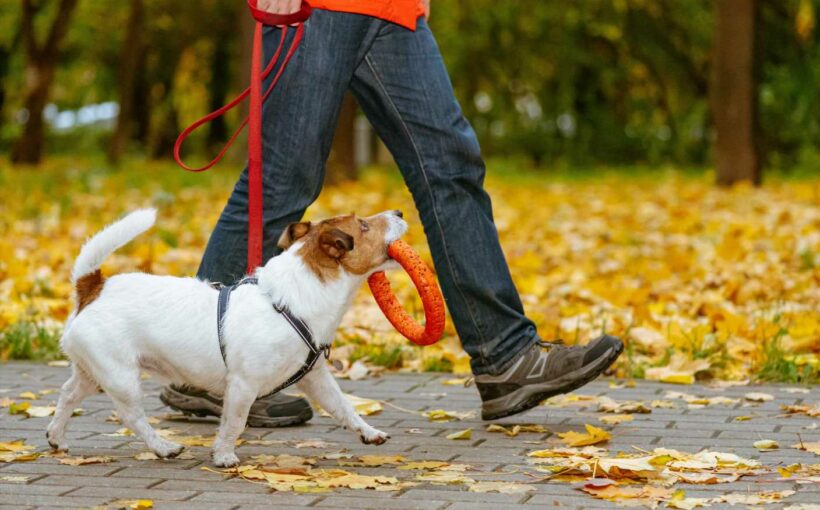WITH piles of leaves to sniff and play in, cooler temperatures and muddy puddles galore, what dog doesn’t love autumn walkies?
But pet owners are being urged to watch out for potentially dangerous hazards lurking on pavements and in parks and woodland.
Nutritionist Alison Frost warns seasonal plants, foliage and seeds can be toxic to pooches – and in rare cases, deadly.
Here Alison reveals the autumnal dangers all dog owners ought to be aware of.
Acorns
Alison, lead nutritional advisor at ProDog, says: “Toxic ingredients like tannins, which are considered antinutrients, reduce the body’s ability to absorb essential nutrients from food.
PET STORIES
I’m a vet & there are three things you should never give your dog
I’m a vet – there are two dog breeds that have the most medical issues
“In dogs, tannins can cause digestive issues, pain, and damage vital organs.
“As green acorns specifically contain high levels of tannins, they should be avoided.”
Conkers
Collecting conkers is a nostalgic childhood pastime – and you could be doing dog owners a favour by picking them up off pavements.
Most read in News
Costa 'crook' behind celeb vodka linked to 38 murders & 'helped launder £173m'
Brit woman, 45, dies after feeling unwell as she walked out to sea in Portugal
Bloke accidentally found ATM glitch & got £1MILLION – blowing lot in 5 months
Boy, 17, and man, 19, killed in horror crash with 2 left fighting for life
Alison says: “The seeds in conkers contain a toxin called aesculin, which can make your dog sick or give them an upset stomach.
“Whilst conkers have a bitter taste that can deter dogs from eating them, don’t use them as a toy, making them attractive to your dog by kicking or throwing them.
“If eaten in larger amounts, aesculin can cause serious side-effects; in rare cases, they can even be deadly.”
She adds that conkers can result in choking, whilst easily blocking dogs’ intestines.
Wild mushrooms
While some types of wild fungi are edible, it’s often difficult to tell which varieties are poisonous and which aren’t.
Alison says: “If your dog eats an unknown fungus, it could make them unwell.
“Some types may only cause mild stomach upset, whilst others can ignite more serious issues.
“These toxic effects can materialise in just minutes, take a few days, or, in some cases, present themselves weeks after consumption.”
If you think your dog has eaten wild mushrooms, Alison recommends calling your vet, taking a photo of the mushrooms and, if you can, take one with you to the vet for identification.
She adds: “The worst wild mushroom type is the Death Cap, an unremarkable-looking woodland mushroom which is thought to be responsible for more poisonings than any other.”
Fallen fruits and berries
As temperatures begin to cool this autumn, lots of trees will start to drop their fruits and berries.
Some seeds, berries, pips, and fruit stones contain toxins that make your dog ill.
Alison says: “The most dangerous berry-bearing plants are Deadly Nightshade, with its shiny black berries, Cuckoo Pint – which produces spikes of orange-red berries – and mistletoe, all typically found in woodland areas.
“These fruits can make your dog unwell if they are eaten when mouldy, or after they’ve begun to ferment.”
Bulbs
A number of cultivated plants are toxic to dogs, including some that are grown to add a splash of autumn colour, such as amaryllis and hydrangeas.
Autumn crocuses can also be dangerous if the bulbs are dug up and ingested.
Alison explains: “Many flowering bulbs are toxic to dogs; for example, daffodils and tulips are particularly hazardous.
“If your dog shows any signs of poisoning after a walk, such as excessive drooling, vomiting, diarrhoea, shakiness, breathing problems, lethargy or seizures, contact your vet immediately.”
Alabama rot
Although quite rare, Alabama Rot – cutaneous and renal glomerular vasculopathy (CRGV) – is thought to be related to walking in muddy areas.
The deadly, flesh-eating condition – sometimes referred to as the "black death" disease – causes problems with blood vessels in the skin and kidneys.
The disease is fatal in nine out of 10 cases, and dogs of any age, sex, or breed can fall victim.
Read More on The Sun
We’re furious as our school LOCKS the toilets during class – it’s insane
I’m midsize and I did a huge M&S haul…the flattering items curvy girls need
It often first appears as unexplained marks, sores or ulcers, usually on a dog's legs or paws.
Alison says: "To prevent your dog from getting ill, experts recommend that you either keep them away from muddy areas or wash and dry them thoroughly after muddy or wet walks."
Source: Read Full Article













